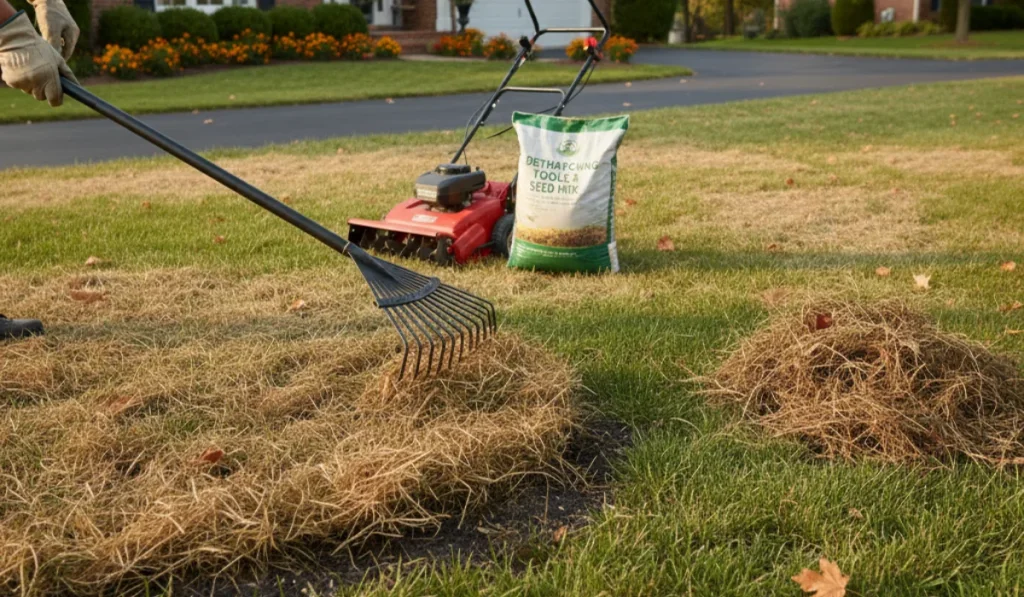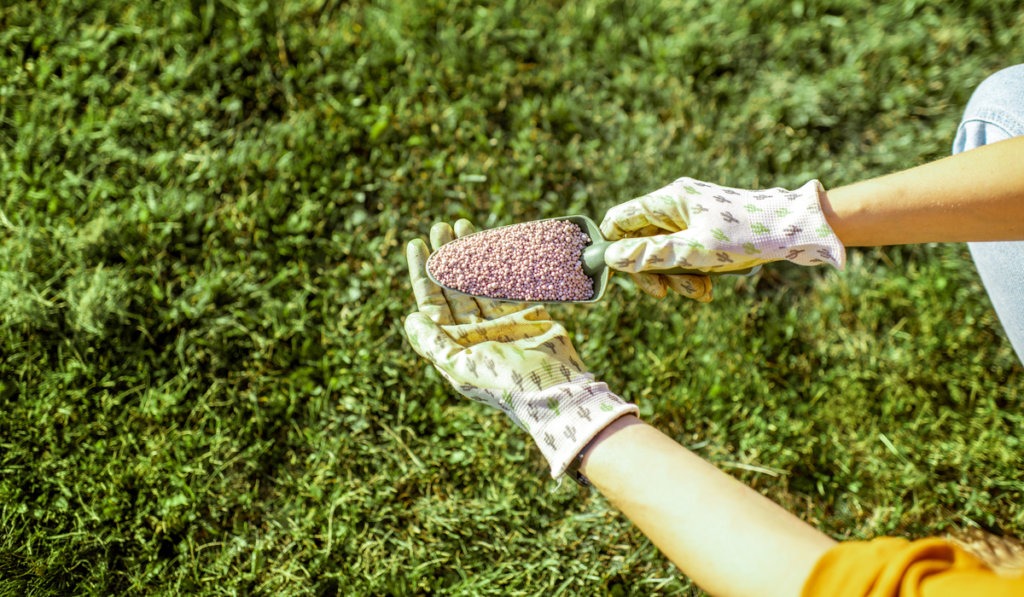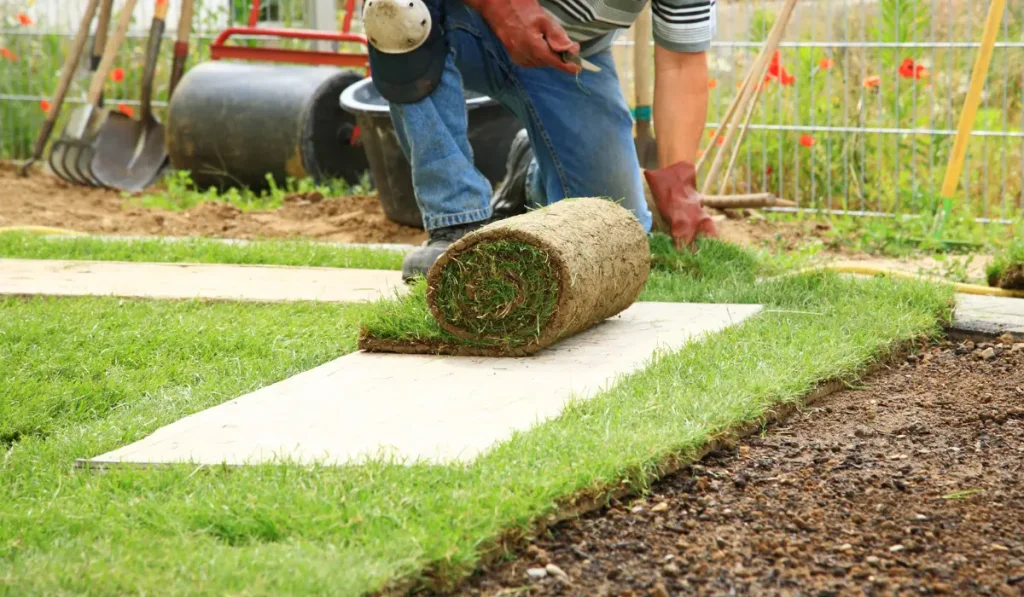A healthy lawn depends on proper watering, and that’s where lawn irrigation comes in. More than just turning on a hose, irrigation systems ensure your lawn gets the right amount of water efficiently and effectively.
In this guide, we’ll explain what lawn irrigation is, explore various systems, and share tips to keep your lawn lush year-round.
Key Takeaways
- Lawn irrigation keeps your lawn healthy by delivering the right amount of water and reducing waste like runoff.
- Common irrigation systems include sprinklers for large areas, drip irrigation for gardens, and automatic systems for convenience.
- When selecting an irrigation system, key considerations may include soil type, lawn size, water pressure, and weather conditions.
- Smart watering schedules and regular system maintenance prevent water waste and help maintain a thriving, stress-free lawn.
The Basics of Lawn Irrigation
Lawn irrigation is the process of supplying water to your lawn to ensure its health, growth, and appearance. By tailoring your irrigation practices to factors like soil type, grass variety, and local climate, you can deliver water efficiently and at the right times.
This approach keeps your lawn thriving, minimizes water waste, and supports environmental sustainability.
Types of Irrigation Systems
Different irrigation methods cater to varying needs, such as soil type, lawn size, and water availability. Below are the most common types:
| Irrigation Type | Best For | Pros | Cons |
|---|---|---|---|
| Sprinkler Irrigation Systems | Large areas needing uniform water distribution. | Easy to automate with timers and rain sensors. | May cause evaporation or water waste if used during peak sunlight hours. |
| Drip Irrigation Systems | Flower beds and lawns with varying plant types. | Reduces evaporation, uses less water, and prevents shallow root growth. | Higher initial setup cost and potential clogging of emitters. |
| Manual Irrigation | Small areas or spot watering. | Cost-effective and precise. | Time-intensive and easy to overwater or underwater. |
| Automatic Irrigation Systems | Homeowners seeking convenience. | Includes oscillating sprinklers, PVC pipes for water flow, and backflow preventers to protect water quality. | Higher upfront cost; requires occasional maintenance to ensure proper function. |
Benefits of a Lawn Irrigation System
When it comes to keeping your lawn looking its best, a well-planned irrigation system offers several benefits that go beyond just saving time.
- Healthier Lawns: Consistent hydration encourages deep root systems and prevents stress from underwatering or overwatering.
- Water Efficiency: Targeting the root zones can reduce the water use of systems like drip irrigation, especially during the summer months.
- Convenience: Automatic systems save time and effort, adjusting based on soil moisture and weather conditions.
- Cost Savings: Reducing water waste can lower water bills significantly over time.
Factors to Consider When Choosing an Irrigation System
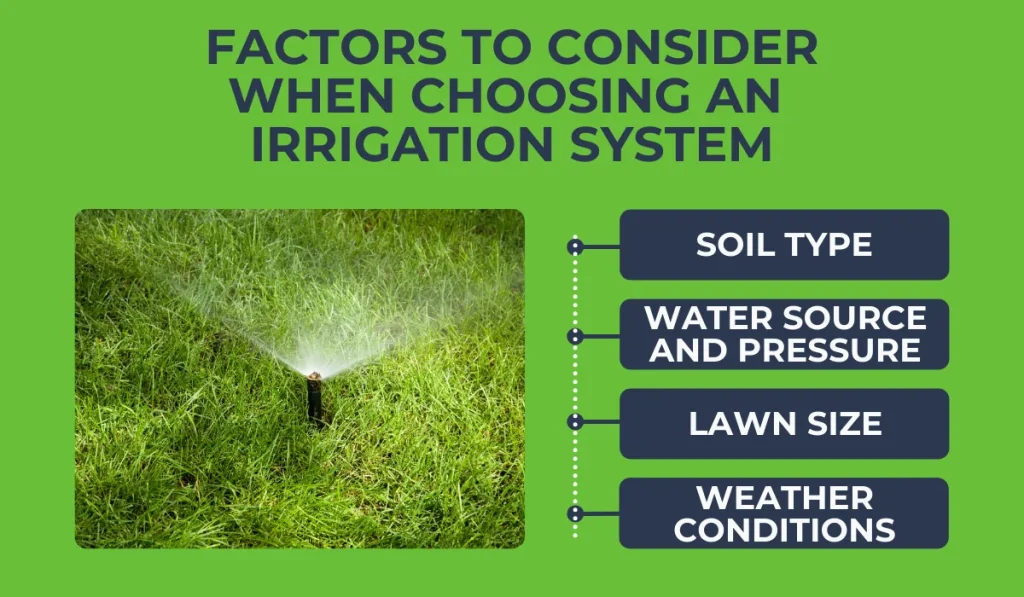
Picking the right irrigation system depends on your lawn’s specific needs.
Here are a few important things to think about that can help you water more efficiently and keep your lawn looking its best:
Soil Type
The soil type in your yard determines how water is absorbed and retained.
For example, sandy soil drains water quickly, so it needs frequent watering, while clay soil holds onto moisture longer but can get soggy if overwatered.
Knowing your soil type helps you choose a system that delivers the right amount of water without waste.
Water Source and Pressure
Your water supply and pressure can affect how well your irrigation system works.
Drip irrigation is a good choice if your home has low water pressure, while sprinklers often require higher pressure to distribute water evenly.
Make sure the system you pick works with your home’s setup and includes features like a backflow preventer to keep your water supply safe.
Lawn Size
The size of your lawn is a big factor when deciding on an irrigation system. Sprinkler systems are ideal for larger areas because they can cover more ground quickly.
If you’re working with a smaller space, like a garden or flower bed, drip irrigation might be a better option. It delivers water more precisely to targeted spots.
Weather Conditions
Think about your local weather when setting up an irrigation system.
In hot summer months, your lawn may need more water to stay hydrated, while rainy seasons might call for adjustments to avoid overwatering.
Automatic water systems with rain sensors or timers can help fine-tune your watering schedule, saving you time and water.
Tips for an Effective Lawn Irrigation Schedule
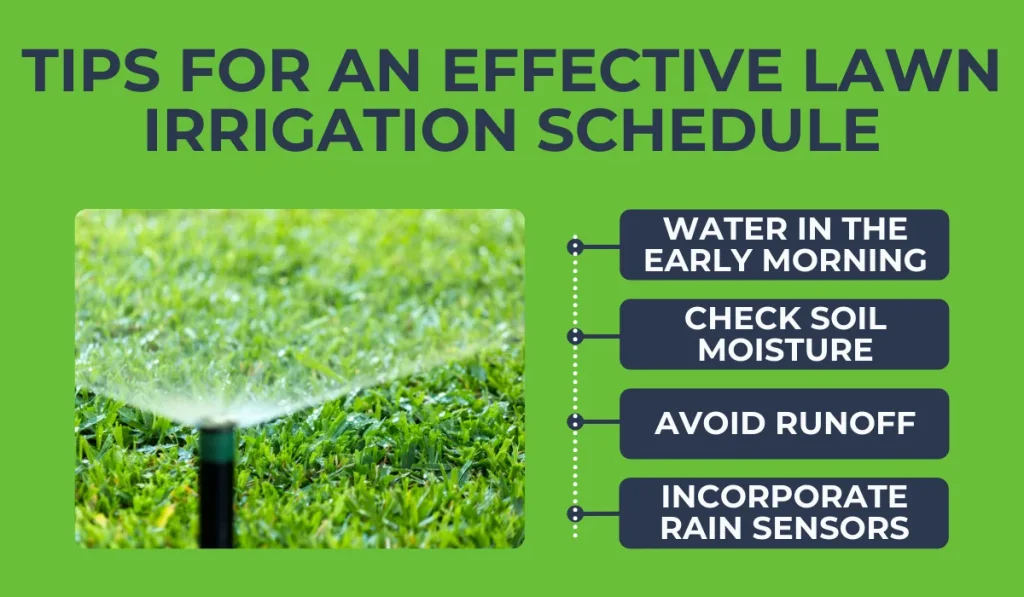
Efficient lawn watering isn’t just about how many inches of water you use—it’s also about when and how you apply it.
Keep these smart watering tips in mind to save water and reduce waste:
- Water in the Early Morning: Watering between 6 AM and 10 AM reduces evaporation and ensures deeper soil penetration.
- Check Soil Moisture: Use a soil probe to determine when your lawn needs watering. Overwatering can lead to shallow root growth or fungal issues.
- Avoid Runoff: Water in shorter cycles to allow the soil to absorb moisture without creating runoff.
- Incorporate Rain Sensors: These prevent overwatering by shutting off your system during rain.
Maintaining Your Lawn Irrigation System
Regular lawn care and maintenance ensures your system performs efficiently:
- Inspect lawn sprinkler heads for clogs or leaks.
- Check for uneven water distribution to prevent dry patches.
- Replace damaged PVC pipes or backflow preventers as needed.
- Winterize your watering system to protect it from freezing temperatures.
Frequently Asked Questions
How can I tell if my lawn is getting enough water?
An easy way to check is to use a shallow container, such as a small dish or can. If it collects about 1–1.5 inches of water weekly, including rainfall, your lawn is likely getting what it needs to stay healthy.
What should I do if some lawn areas are dry while others are overwatered?
Dry or soggy spots can mean your irrigation system isn’t distributing water evenly. Check for clogged sprinkler heads, leaks, or improper placement. Adjust your system to ensure full coverage, and consider adding rain sensors for better efficiency.
Is installing an irrigation system something I can handle myself?
For simpler systems like drip irrigation, installation is usually manageable with basic tools and instructions. However, automatic systems with sprinkler heads and timers might need professional help to ensure proper setup, water pressure, and compliance with local requirements.

